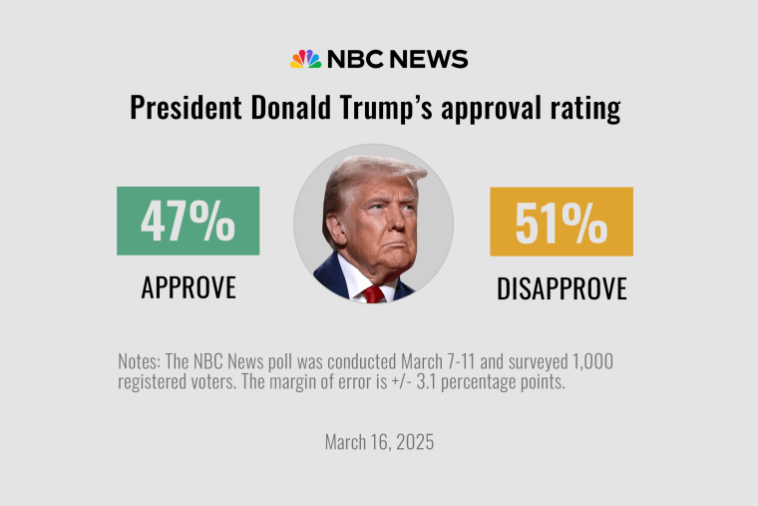A new survey conducted by Rasmussen Reports, which is known for its fair and impartial approach, has showcased the approval rate for President Donald Trump. Paying close attention to the performance of Trump’s administration is a routine practice in such independent surveys. These continuous polls provide a measure of the general sentiment around Trump’s presidency, albeit through a specific lens.
Rasmussen Reports, leans into the concept of transparent conduct and releases its findings on a rolling basis over a five-day timeframe. Their approach consists of taking daily opinions from a pool of 300 possible voters, effectively mapping out the shifts, dips, and surges in voters’ opinions. Employing this timely and unbiased practice, the results reflect a true public sentiment.
A break was taken in these regular polling activities on the occasion of the Fourth of July holiday. Therefore, the survey results took into account responses until July 3. In this particular polling sample, President Trump secured approval from 49 percent of respondents. A negligible portion, of 48 percent, seemed to disapprove of his administration’s undertakings.
This gives the President a positive net approval rating, placing him on the more favorable side of the political landscape. Concerning the intensity of voters’ sentiment, 36 percent of the respondents had expressed ‘strong’ approval for Trump’s performance. On the other side of the spectrum, a marginally higher figure of 41 percent ‘strongly’ disapproved.
In previous iterations of the survey, Trump’s performance had demonstrated some volatility. On May 22, his total approval was at 49 percent, which was the lowest since the 48 percent mark he had hit on April 30. However, these are but wrinkles in the larger canvas of public sentiment, which seem to smooth out progressively as times and conditions change.
A separate snapshot from the Rasmussen Reports suggested that President Trump’s approval rating was at 52 percent as of June 25th, and it peaked to a healthy 53 percent on June 13th, manifesting itself as a strong example of Trump’s robust performance, despite facing minor turbulent periods.
Rasmussen Reports has often been characterized as extending a favorable lean towards conservative issues and candidates. However, the firm maintains its commitment to neutrality and impartiality in conducting its surveys – ensuring free and unbiased insights into the masses’ opinion about Trump’s presidency.
An alternate poll conducted by Civiqs presented a slightly different perspective on Trump’s approval ratings. Out of 50 states that the poll sampled, Trump enjoyed a net positive approval in 21 states. The figures were reversed in the remaining 29 states, presenting a net negative view. However, it’s worth noting the potential limitations and bias in Civiqs’ polling process which might have contributed to this pattern.
In terms of a comprehensive comparison, YouGov conducted a poll for The Economist in late June. In their sample of 1,590 U.S adults, Trump’s net approval rating significantly differed from that presented by the Rasmussen Report, providing a -14 net approval rating. However, the exact reason behind such a different outcome is open to interpretation, and one might argue that sample biases may have skewed it unfavorably.
A supplementary study by YouGov, in partnership with Yahoo, thrust the spotlight on the Generation Z demographic. Within this demographic, Trump’s net approval was seemingly dwindling, falling from -23 percentage points in May to -41 percentage points by the end of June. However, one must understand that these numbers correlate mainly to the people within the specific demographic in the study.
Amid the ebb and flow of approval ratings, Trump confidently ushered in what he referred to as the ‘Big Beautiful Bill’. This sweeping taxation and spending package strives to shore up his administration’s popularity, boasting a line-up of tax cuts, increased defense spending, amplified border security, and moderated spending on Medicare.
Thus, President Trump continues to take bold steps that emphasize the balance between defense preparedness, fiscal responsibility, and security issues. Through it all, approval metrics provide only a facet of the multidimensional public sentiment, which is as dynamic as the President’s approach to governance itself.
It will be interesting to see how the introduction of the ‘Big Beautiful Bill’ will affect the approval ratings in the next poll cycle. Nonetheless, no matter how the ratings fluctuate, Trump’s presidential initiatives have stirred substantial discussion and have undeniably left a notable mark on the American political landscape.

